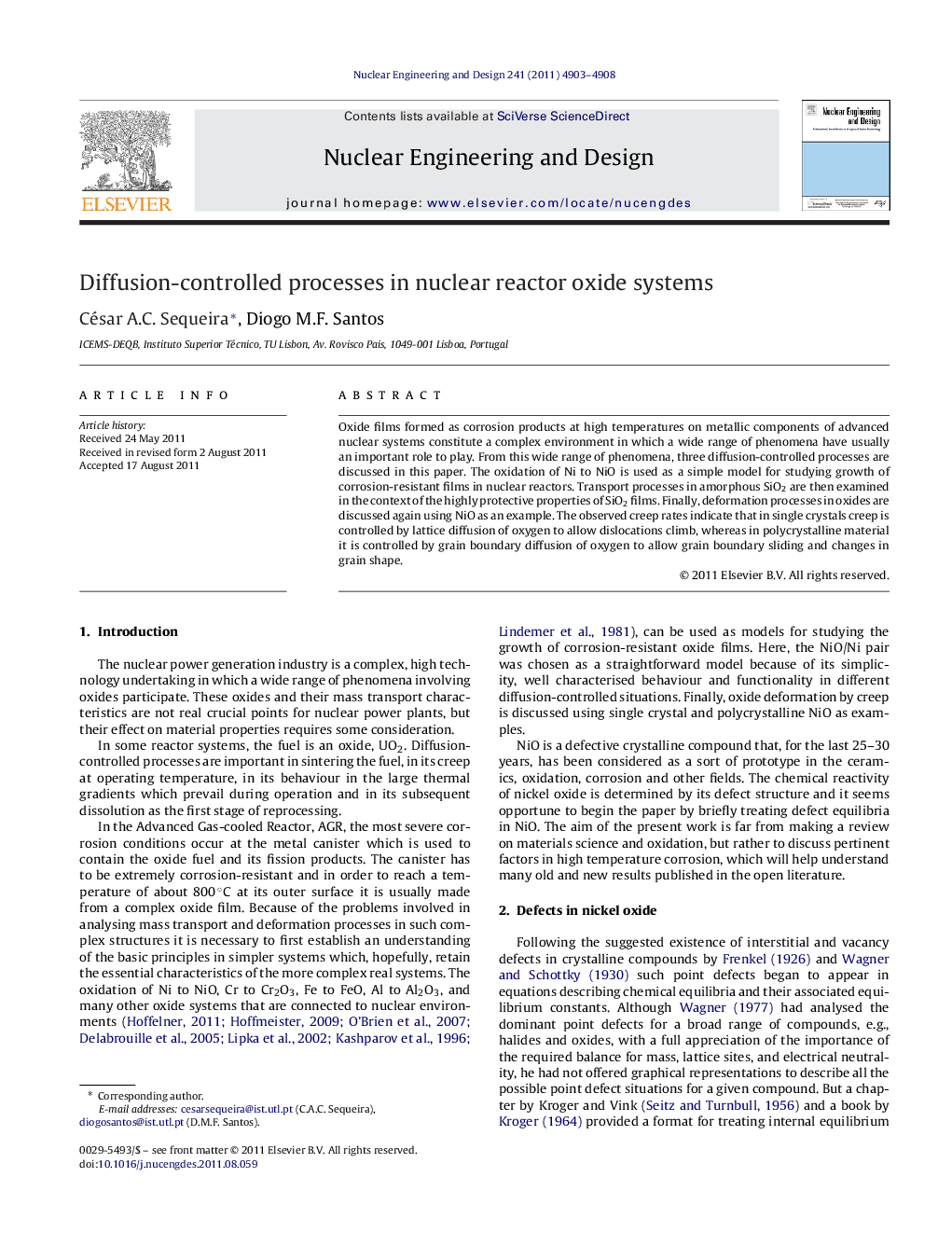| کد مقاله | کد نشریه | سال انتشار | مقاله انگلیسی | نسخه تمام متن |
|---|---|---|---|---|
| 297601 | 511762 | 2011 | 6 صفحه PDF | دانلود رایگان |

Oxide films formed as corrosion products at high temperatures on metallic components of advanced nuclear systems constitute a complex environment in which a wide range of phenomena have usually an important role to play. From this wide range of phenomena, three diffusion-controlled processes are discussed in this paper. The oxidation of Ni to NiO is used as a simple model for studying growth of corrosion-resistant films in nuclear reactors. Transport processes in amorphous SiO2 are then examined in the context of the highly protective properties of SiO2 films. Finally, deformation processes in oxides are discussed again using NiO as an example. The observed creep rates indicate that in single crystals creep is controlled by lattice diffusion of oxygen to allow dislocations climb, whereas in polycrystalline material it is controlled by grain boundary diffusion of oxygen to allow grain boundary sliding and changes in grain shape.
► Pertinent classics in high temperature corrosion are discussed.
► Ni to NiO oxidation model applied in growth of corrosion-resistant films in nuclear reactors.
► Transport processes in amorphous SiO2 in the context of its protective properties.
► Oxide deformation by creep using NiO single crystals showing lattice diffusion control of oxygen.
► Creep in polycrystalline NiO controlled by grain boundary diffusion.
Journal: Nuclear Engineering and Design - Volume 241, Issue 12, December 2011, Pages 4903–4908